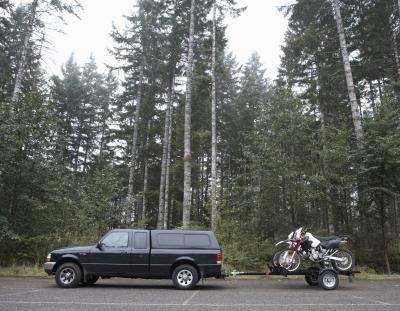
Trailer light colors have the same meaning as the lights on the vehicle towing the trailer. Trailer lights provide other drivers with information regarding the trailer's size and direction, and indicate if the trailer and vehicle are slowing or stopping. A basic system of marker, brake and signal lights are required by law in every state and province in North America.
A trailer must have a minimum of two red lights positioned on either side of the rear of the trailer. Red trailer lights signal the trailer's direction of travel by blinking when the vehicle's turn signal is activated. Red trailer lights also notify drivers behind the trailer when it is braking; both rear red trailer lights will illuminate when the brakes are engaged.
Orange trailer lights are called marker lights, and are intended to provide a visual indicator of the size of the trailer. Use a minimum of one orange marker light on each corner of the trailer. Orange marker lights illuminate in a solid color.
White lights indicate that a trailer is being driven in reverse. They are typically installed inside or next to the rear brake and signal lights. Reverse lights are not required on trailers, but are a wise addition to notify pedestrians and other vehicles that the trailer is backing up.
Trailer wires are color coded to indicate what they supply electricity for. The white wire is the universal ground for all of the trailer's electrical devices. The green and yellow wire are for the signal lights. The brown wire supplies power for the marker lights. The blue wire is connected to the trailer's electric brakes. The red wire provides charging power for a trailer battery. The purple wire provides power for the reverse lights.